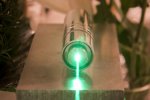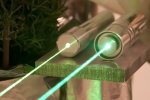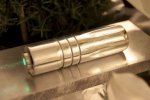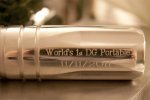rhd
0
- Joined
- Dec 7, 2010
- Messages
- 8,469
- Points
- 0
I'm going to jump right in here and tackle some brief initial comments, and Aryntha will jump in for the second and more substantial portion of this review. About a month ago I was able to start testing some direct green diodes. I spent some time testing the diodes, testing drivers, and experimenting with M9x0.5 lenses. Eventually I transferred the diodes into portables, and one of these then headed out to Aryntha.

First, some important notes:

After testing, I ultimately decided to give the diodes a more permanent home in a portable unit. Out of this came the DGH-N1 and the DGH-N2. Not real product names, just descriptors used to identify the first and the second (to my knowledge) direct-green diode portables. One (the 1st) is with me, the second is now with Aryntha. They're essentially the same, save for the fact that the unit Aryntha now has was built using a direct-press housings from Lazeerer (btw, big thanks for your quick turnaround, I know you lost a few hours of sleep on them!).
The two portables are also engraved, with their rough build dates, and a small claim to fame as the "World's 1st" and "World's 2nd" Direct Green Handhelds. To my knowledge, this is true, but of course it very well may not be - I'm sure there are some lab scientists chuckling at the title somewhere

My diode review / build notes:

To my knowledge the engraving is accurate, but who knows

First, some important notes:
- We're going to talk about as much as we think is appropriate to talk about. If there's something we don't address, it's probably for a reason, and it's probably for a reason that isn't selfish or silly. One thing I'm not going to talk about, is where these diodes came from. It's not necessarily a secret, but it's also not my place to say. I'm more than happy to acknowledge the source of these diodes if that source so desires, but otherwise, I'm staying mum on the subject. That said, I think a lot of people on the forum already seem to know where these diodes originated from. Our reason for not bringing it up here directly, is out of courtesy - to avoid an inbox flood that may be unwanted.
- What I will say about the origin of these diodes (to save everyone a lot of wasted time) is that they're not harvests. These were legitimate, and moderately pricey, purchases of bare diodes, and, as far as I know, they aren't available again at this very moment anyway. Though I'll mention that their cost was not nearly in the range of what sample diodes like the exotic 488 and 473s cost. Think of this sort of like those 445s that started popping up a year or so before the KasEO diodes. So again, these aren't harvests from a retail consumer product, and probably won't be found in any such product any time soon. 510nm is not the ideal colour for projection purposes, so this is kind of like a "mistaken hop" on the pathway to the more desirable ~520 range.
- The other note, is that this really *shouldn't* cause any silly drama like we saw with 445s. These are still costly diodes, and they're relatively low power (much lower than even very inexpensive DPSS 532 modules). So, this isn't an earth-shattering moment in the community. I sort of think of it as somewhat on par with getting a new DPSS wavelength from CNI

After testing, I ultimately decided to give the diodes a more permanent home in a portable unit. Out of this came the DGH-N1 and the DGH-N2. Not real product names, just descriptors used to identify the first and the second (to my knowledge) direct-green diode portables. One (the 1st) is with me, the second is now with Aryntha. They're essentially the same, save for the fact that the unit Aryntha now has was built using a direct-press housings from Lazeerer (btw, big thanks for your quick turnaround, I know you lost a few hours of sleep on them!).
The two portables are also engraved, with their rough build dates, and a small claim to fame as the "World's 1st" and "World's 2nd" Direct Green Handhelds. To my knowledge, this is true, but of course it very well may not be - I'm sure there are some lab scientists chuckling at the title somewhere
My diode review / build notes:
- Being 3.8mm in form factor, I initially turned to Pontiac's fantastic copper-modules and had one pressed into one his 12mm-compatible housings. Pontiac's modules are fantastic. I've used them for single-mode blues as well, and they very well may be at the top of my list of diode housing solutions.
- The diodes require an incredibly high voltage supply, nearing 8V at spec-sheet current levels. That's no easy task. I elected to go with 3x cell hosts and a buck driver.
- Regarding spec-sheet current levels, these diodes don't require much. Both builds are running at 191mA to output roughly ~45mW. However, to put that into perspective, at a Vf of 8, we're looking at about 1500mW of input for 45mW of output, which is a diode efficiency of slightly under 3%.
- In context, my single-mode blue has a diode efficiency of somewhere around 15%, and my single-mode red (the HL63133DG), before I sold it, would hit almost 20%. Or if we're comparing apples to apple (colour wise), a 532nm FireDragon's module gets somewhere on average of around 7% IR diode input to 532nm output. In other words, these aren't high efficiency diodes just yet.
- I love the colour. I'll let Aryntha address that in more detail, but for my part, I'll just say that it's a beautiful "forest green". In fact, at 510 (or whatever these end up being), they actually seem like a more "authentic green" than 532nm DPSS. Of course, this is at odds with the reality that 510nm is not "ideal" in terms of colour mixing, and isn't where they want these diodes to ultimately land colour-wise.
To my knowledge the engraving is accurate, but who knows
Attachments
Last edited:























